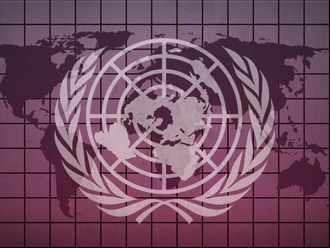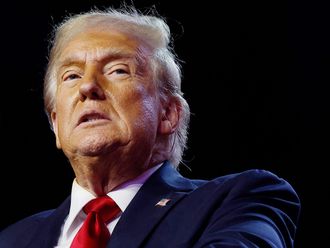
For the third time in five years, the world's poorest countries are at risk of being hit by a crisis not of their making — a prospective downturn brought on by financial turmoil in the world's most advanced economies. Having gone through the food and fuel shock of 2007-08 and the global financial crisis that followed, low-income countries may now face even larger disruptions in 2012. And, given the interdependence of today's globalised world, poor countries' distress will invariably have unwelcome consequences for everyone, rich and poor alike.
At the height of the global crisis in 2009, many low-income countries experienced a slowdown in growth marked by falling exports, lower remittances from expatriate workers, and subdued foreign investment. The social consequences were severe: the World Bank estimates that an additional 64 million people were left in extreme poverty by the end of 2010.
Yet it could have been much worse. Thanks to greatly improved policy performance over the previous decade, low-income countries entered the crisis far better positioned to withstand shocks than in the past. They had smaller fiscal and current-account deficits, lower inflation, larger international reserves, and — thanks in part to debt relief — lower debt burdens.
As a result, most countries were able to maintain or even increase spending, despite lower revenues, and allow fiscal deficits to widen. This propped up economic growth, while also boosting outlays for critical investments and social programmes needed to lessen the hardships faced by the poorest people. The downturn was also relatively short-lived, partly as a result of the greater openness to world trade that lower-income countries have embraced over the past decade.
But these countries are still highly vulnerable. Many have not had sufficient time to rebuild the policy buffers that served them so well. There is less ammunition left in the fiscal arsenal, current-account deficits have widened, reserves have declined, and debt levels have risen significantly in some countries. Moreover, with the advanced economies themselves facing budgetary pressures, foreign aid may be severely constrained for some time to come. Under these circumstances, it is by no means certain that low-income countries will have access to additional concessional financing.
As a result, a new global downturn would hit low-income countries hard. International Monetary Fund (IMF) simulations suggest that a decline in global growth of 1.5 percentage points could, owing to its impact on trade and financial flows, generate a $27 billion gap in additional external financing in 2012 alone. That would also push 23 million more people — most of them in Sub-Saharan Africa and Asia — into poverty.
What can countries do to help themselves? The scope for fiscal stimulus is more limited than in 2009, but countries with sufficient fiscal room and available financing should maintain spending levels and preserve critical social and infrastructure programmes. Countries with moderate inflation could be more assertive with monetary and exchange-rate policy.
A key priority for 2012 and subsequent years must be to build increased resilience against shocks. Low-income countries should boost their revenue bases to reduce reliance on external financing, while improving the efficiency of spending. In particular, improving the scope and targeting of social safety nets would go a long way toward protecting the poorest in the event of a further global downturn.
Diversification
Several countries, including Armenia, Burkina Faso, Sierra Leone, Ghana, and Kenya, have already made successful strides in this direction, using means-tested food-voucher programmes, maternal and family benefits, school-based social services, and conditional cash-transfer schemes targeting the most vulnerable groups, such as orphans.
Over the longer term, low-income countries would benefit from diversifying their economies and avoiding over-dependence on a few products and trading partners. More diversified economies are also likely to deliver more inclusive growth — growth that creates jobs for more people, and that distributes its benefits more widely. In order to boost long-term growth prospects and productivity, low-income countries will also need to meet huge infrastructure needs, especially in the area of electricity generation and transportation.
What can we do to help? The IMF is ready to assist with policy advice, financial support, and technical assistance. We have boosted our concessional lending capacity to $17 billion (Dh62.39 billion) through 2014, and doubled the amounts countries can draw. We have also cut interest rates on all concessional lending to zero through 2012. We have made our lending instruments more flexible, so that financial support can reach our members quickly, leaving sufficient room for high-priority spending to support growth and protect the most vulnerable.
Ultimately, the best way that the international community can help the low-income countries is for the advanced economies to get their houses in order and restore strong and sustainable global growth. That will help to ensure that low-income countries remain on track to consolidate and extend the impressive achievements of the last decade.
— Project Syndicate, 2011
Christine Lagarde is managing director of the International Monetary Fund.









